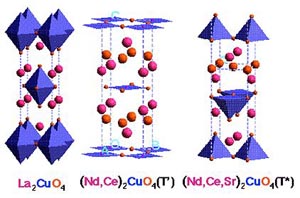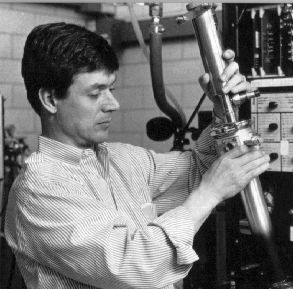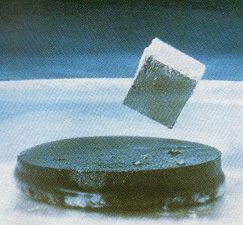New superconductors could emerge from research by American and Japanese physicists who are investigating new ceramic materials with split personalities.
A class of materials known as cuprates have been found to switch between two different kinds of superconductivity under certain physical conditions and Thomas Lemberger (http://www.physics.ohio-state.edu/~trl/group/) of Ohio State University and colleagues at the NTT Basic Research Laboratories, in Kanagawa, Japan hope this dual character might be exploited in creating tough new superconductors as well as settling a debate among physicists about how cuprate superconductivity arises in the first place.

Cuprate semiconductor
There are two camps among physicists studying cuprate superconductors. In one, they believe these materials display d-wave superconductivity but the other camp claims a mutually exclusive position citing cuprates as s-wave materials.
The difference depends on how the electrons are arranged within the material, explains Lemberger. Materials with s-wave behaviour could be more useful technologically as they may, for instance, perform better in high-frequency devices like mobile phone base stations. In order to exploit superconductivity, which is the loss of electrical resistance in a material, researchers need to find materials that do so at close to everyday temperatures rather than the chilly climes of liquid nitrogen and below.

Instrumentation in the Lemberger lab
Unfortunately, most high-temperature cuprates have been shown to exhibit the less desirable d-wave behaviour.

Lemberger
A glimmer of hope appeared on the horizon in 1991 when Bell Labs scientists observed s-wave superconductivity in the all-carbon soccerball molecule buckminsterfullerene when they added, or doped it with, potassium ions at a relatively balmy temperature. Researchers have been kicking around the idea of materials displaying s-wave superconductivity at higher temperatures ever since.

The familiar face of superconductors showing the Meissner effect
Now, Lemberger and his team say they can flip the behaviour of a certain type of cuprate from d-wave to s-wave if they dope it with enough cerium metal ions. The formulae for the materials they have studied are Pr(2-x)Ce(x)CuO(4) and La(2-x)Ce(x)CuO(4). It seems that the mechanisms for both kinds of behaviour are always present in these materials, Lemberger explains, So if you do something to suppress one behaviour, a cuprate will automatically switch to the other.
Lemberger explains that changing the composition of a cuprate just a little seems to turn it into a superconductor. With the tiniest wisp of voltage, you’ll get huge currents flowing, he enthuses.
In the cuprates, copper and some oxygen atoms (one Cu to two Os) form a one-atom-thick layer between the other atoms, which Lemberger describes as being like a slice of bologna between two crackers. The crackers comprise the rest of the oxygen atoms and the metal atoms, like Pr and Ce. And, like crackers, these compounds are brittle, so cannot be made into useful wires. Nevertheless, he told Spotlight, remarkable progress has been made and in five years superconducting wires will be routinely considered by companies as an option for power lines, e.g., between dams and cities tens of miles away.
Lemberger adds that the scientific controversy surrounding the nature of superconductivity in cuprates will come to a head this summer, as researchers gather in Taiwan to debate which of the two personalities, d-wave or s-wave, is the true state of the material. Our work bridges the gap between the two camps, Lemberger says, We propose that it’s just a matter of composition. Pushing the cuprates towards the s-wave character could ultimately lead to new high-temperature superconductors. Such materials hold the promise of much more efficient power generation because an electric current will flow through with zero energy losses due to heating caused by the material’s resistance.
Further reading
Phys. Rev. Lett. 88, 207005 (2002)
http://dx.doi.org/10.1103/PhysRevLett.88.207005
Suggested searches
High Temperature Superconductors
Superconductors